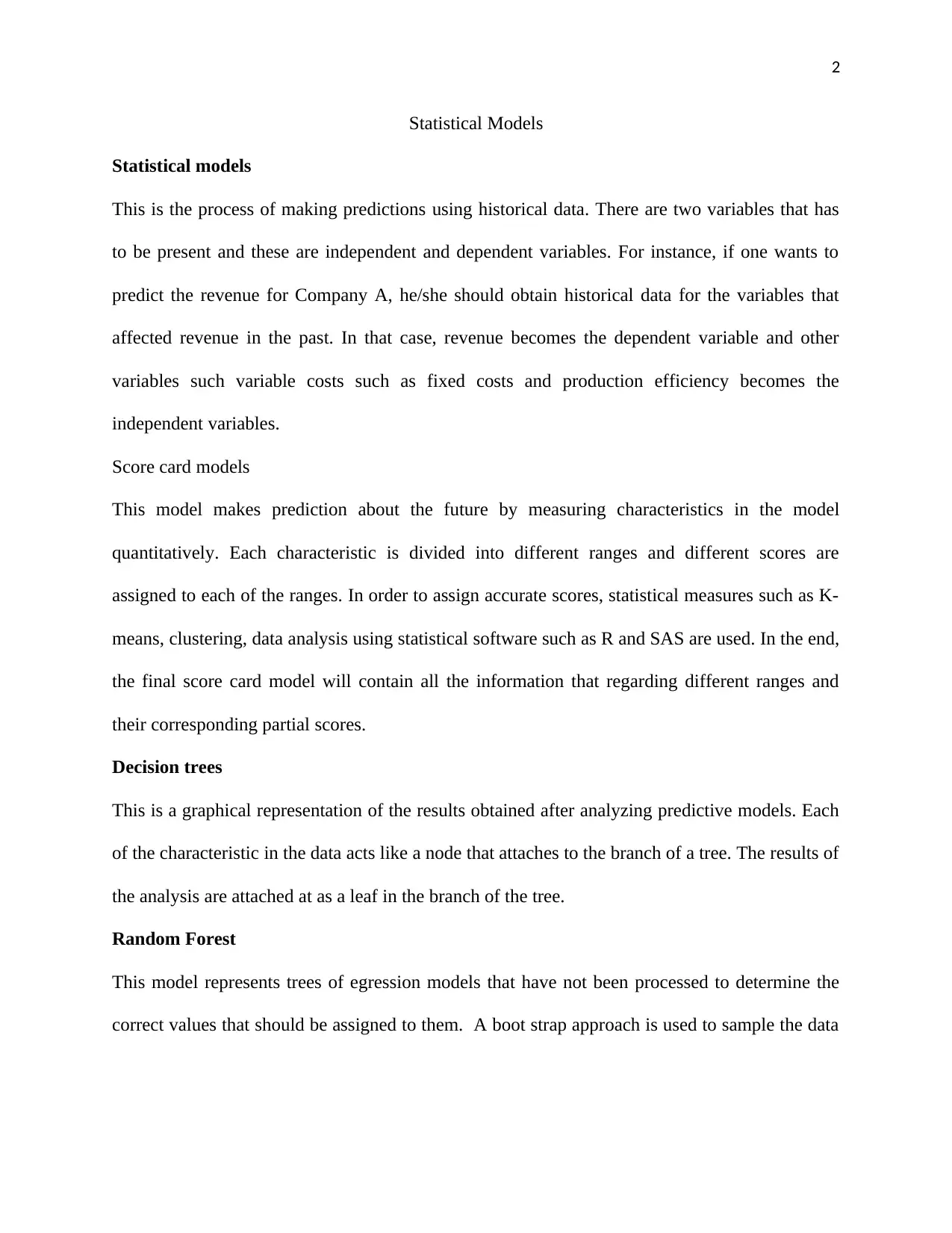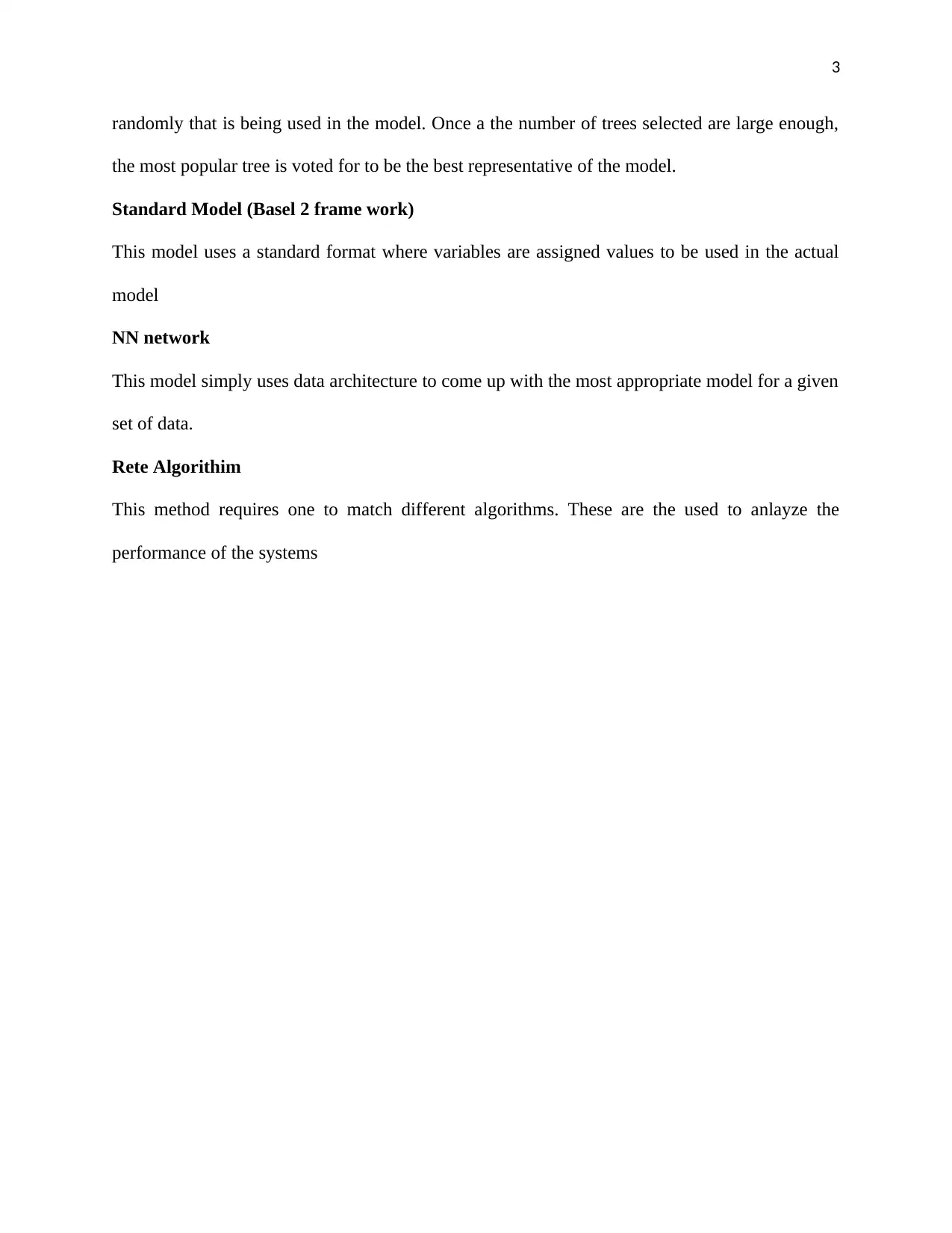Statistical Models: A Detailed Analysis of Statistical Methods
VerifiedAdded on 2022/08/01
|3
|382
|219
Report
AI Summary
This report offers an overview of several statistical models. It begins by explaining the general concept of statistical models and their use in predicting outcomes based on historical data, differentiating between dependent and independent variables. The report then delves into specific models such as scorecard models, which use a scoring system to predict future outcomes based on data characteristics and statistical measures like K-means and R. Next, it explores decision trees, which graphically represent the results of predictive models, and random forests, which involve multiple regression trees and a voting process to determine the most representative model. Additionally, the report touches on the Standard Model (Basel 2 framework), NN networks, and the Rete Algorithm, illustrating different approaches to data analysis and model creation. This report is designed to provide a clear understanding of the different methods used in statistical analysis.
1 out of 3









![[object Object]](/_next/static/media/star-bottom.7253800d.svg)